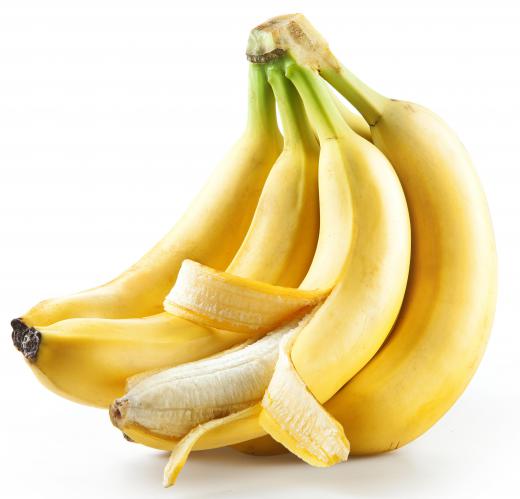What is Taxonomy?
 Mary McMahon
Mary McMahon
Taxonomy is a practice in which things are arranged and classified to provide order. A classic example of taxonomy is scientific or alpha taxonomy, the system used to classify all living organisms. As scientific taxonomy demonstrates, the process of classifying things serves a number of functions, and it can be extremely beneficial to a greater understanding of the objects, ideas, or organisms being classified.
This term comes from the Greek, and it literally means “arrangement method.” There are a number of ways to arrange things, ranging from codified taxonomical systems which are widely recognized, like the Dewey Decimal System, to personal systems which people use to organize things in a way which makes sense to them. For example, many websites break their contents down into categories to make it easy for users to find specific topics of interest.

Humans appear to have a natural tendency to want to order and name things, and from a very young age, people are engaging in taxonomy, even if they aren't fully aware of it. For example, children learn that bananas are a type of fruit, but that not all fruits are bananas. This provides them with a general category, “fruit,” and a subtype, “banana.” Over time, they may add additional categories to the hierarchy, like “tropical fruit,” or “unripe banana.” In the process of ordering things and putting names to them, the child learns about the relationships between various objects in the taxonomy, and gains a greater understanding of the world at large.

Almost any collection of objects can be subjected to taxonomy, and often is, from libraries, which are arranged using cataloging systems to make books easier to find, to personal collections of model aircraft, which may be arranged by manufacturer, era, style, and so forth. In all cases, the organization of the objects is designed to bring order to the collection, and to allow people to see how objects are related.
Taxonomy also allows people to define and name things. In the banana example above, for example, a child learns that something with a distinctive yellow color and curved shape can be called a banana or a fruit, but that something which is round and red is not a banana, although it may be a fruit. Because the taxonomy for fruits is standardized, a child also knows that when he or she asks someone else for a banana, a banana will be produced, not an orange.
AS FEATURED ON:
AS FEATURED ON:












Discussion Comments
@pleonasm - I wonder if it's biological or simply a natural tendency once a creature passes a certain level of intelligence.
We certainly couldn't function as a society without being able to organize things to a very small scale. When you think about business taxonomy, which can get to almost ridiculous levels of pedantry, you might wonder why we ever came down from the trees!
@bythewell - Those cases where animals have learned to communicate through sign language are generally fairly controversial and the scientific community definitely does not have a consensus on whether or not animals can verbalize an understanding of taxonomy.
It's an interesting question though. I mean, in some ways putting things into categories is always going to be natural. Being able to talk about them in a meaningful way is completely different though.
Interesting. I didn't realize that taxonomy applied to all ways of organizing things and not just to the way they organized lifeforms in biology.
I wonder if this is something that an animal can understand. I know that seems like a dumb thing to say, but they have managed to teach gorillas and grey parrots how to understand simple sentences like "throw the ball". Can a gorilla understand that those three objects are all balls, but only one of them is red?
It's interesting and it must shed a lot of light on our own evolution and abilities as humans to see what other creatures are capable of.
thanks for a very simple, short but sweet answer.
Loved the way the article answered my question... put simply and efficiently! Thanks.
Post your comments